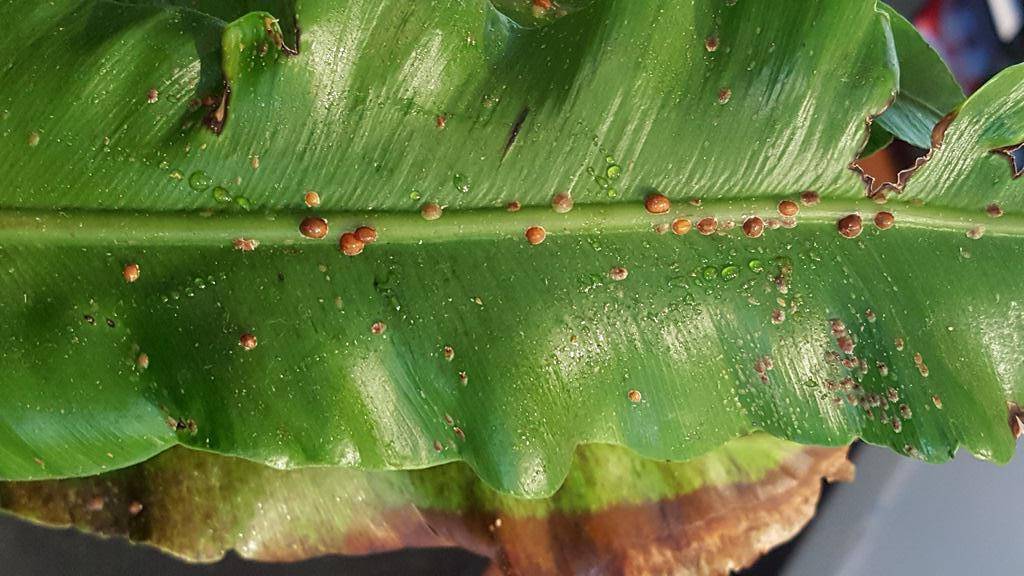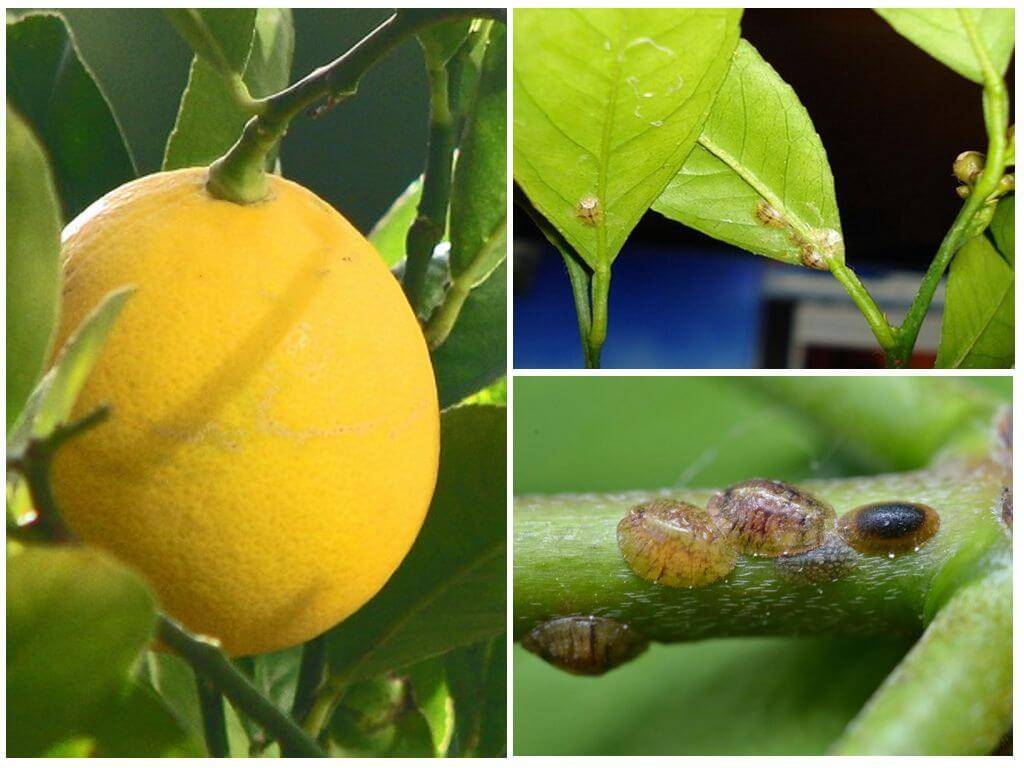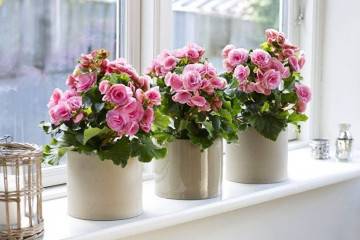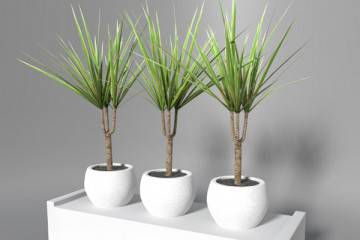Scabbard on indoor plants - how to fight at home
Content:
The scale insect is an insect that parasitizes indoor plants. Since it is quite unpretentious, it can infect any indoor flowers, but most often it settles on such as palms, laurel, amaryllis and any citrus fruits. There is an opinion that the scale insect affects only decorative deciduous plants, but this is nothing more than a myth. The pest may well choose floral specimens.
What is this parasite
There are several types of scale insects. Depending on which flower this dangerous pest was found on, one can assume which species it belongs to.
- cactus scale insects epiphytes;
- scaled brown prefers plants with succulent leaves, such as yucca, dracaena, Livingstone palm, rubber ficus, citrus fruits, oleander, camellia, and hibiscus;
- The scabbard usually affects olive trees, nightshades, pomegranate, bastard, laurel, and can also settle on hibiscus and citrus fruits.
Even the most attentive flower growers sometimes get lost, wondering where these parasites appeared on well-groomed plants. In most cases, the scale insect larvae are brought into the house through open windows and vents. In addition, the appearance of insects is facilitated by the weakened immunity of the indoor flower (this phenomenon has two main reasons: inappropriate conditions of detention and an excess of vitamin supplements).
What harm does the scale insect do to indoor plants
The scale insect on indoor plants poses a great threat to both the affected flower and the plants located next to it. The scabbard is a sucking parasite. Adhering tightly to the leaves or stem of the flower, the insect feeds on its juices. On the leaves affected by the pest, reddish spots first appear, after which the leaves gradually change color to yellow and die off. If the treatment has not been started, then gradually the stem of the plant, deprived of some of the nutrients, is exposed, the branches dry up, and the trunk may be bent.
External signs of damage to the scabbard
It is quite simple to notice the scale insect: adult female insects look like small convex specks of dark brown color (the color may differ depending on the species), dispersed along the plant stem and its leaves. This means that the insects have already laid the larvae. The female scale insect, closely clinging to the leaf or stem, loses its mobility. This is because the female covers the larvae deposited on the plant with her body. The body of the insect is covered with a wax layer, which adheres the parasite more firmly to the selected area and is a kind of shield that protects the insect from the effects of chemicals. In this case, getting rid of the pests will be more difficult.
False shield on indoor plants
Florists often confuse a scabbard with a false shield. Indeed, these two parasites are similar, but there are significant differences: the false shield does not have a protective wax layer, therefore it is much easier to remove it. Usually false shield is easily destroyed by chemicals. It is quite easy to check which insect has settled on an indoor flower: the false shield can be removed by sliding your finger over the infected area. The usual scabbard cannot be removed in the same way.
Scabbard on indoor plants: how to fight at home
There are only two methods of dealing with this dangerous parasite: treatment with chemicals and folk recipes. Before taking on the restoration of a sick flower, it is necessary to decide which method is suitable in this or that case. A folk remedy will help with minor infection, but in case of severe parasite infestation, complete disposal is possible only with the help of "chemistry".
The toxicity levels of drugs are divided into four classes:
- 1 class of danger - extremely dangerous;
- Hazard class 2 - highly hazardous;
- Hazard class 3 - moderately dangerous;
- Hazard class 4 - low hazard.
Of course, before deciding how to deal with harmful insects at home, you should evaluate not only the toxicity levels of chemicals, but also factors such as possible allergic reactions, the presence of small children and pets in the room.
Chemicals
Despite the huge selection of funds, the following drugs have proven themselves best of all:
- Into-Vir is an effective means of fighting parasites. This chemical is not narrowly targeted, it is used not only against the scabbard, it is effective against aphids, spider mites;
- Aktara is one of the most popular pest control drugs. If the plant is not tall (less than 30 cm), then the soil can be shed with a solution of actara. In this case, the root system, having absorbed the insecticide, will spread it throughout the plant. After this, the flower will become poisonous to parasites;
- bankol - a remedy, according to gardeners' reviews, is not the most reliable, but it helps in the early stages of infection;
- actallic is a powerful insecticide, however, due to the high level of toxicity, it cannot be used indoors;
- fitoverm is the second most popular chemical after Actara. Effective against scale insects, thrips and a number of other pests. With the help of it, you can rid the flower of parasites, but most often re-processing is required.
Before using any chemical product, you must first clean the plant from the scale by hand. To do this, you need to prepare a soapy solution or alcohol, but remember that alcohol can burn the leaves. It is best to dilute alcohol with water in a 1: 1 ratio. Then wipe the stem and leaves on both sides with a cotton pad moistened with the solution. It is advisable to change the disc after a few insects have been removed.
After the preparation is completed, you need to spray the flower with an insecticide solution. You should not take on its preparation without taking care of protecting the skin of the hands and respiratory tract. It is wise to wear a medical mask and rubber gloves.
The place where the pot with the affected plant stood also requires treatment with an alcohol solution or the remaining insecticide solution. If the plant was standing on a windowsill, the glass surface must also be treated.
In some cases, after 5-6 days, it is necessary to carry out additional processing of the plant. This is due to the fact that the scabbard can hide in the leaf sinuses and not suffer from the effects of the drug.
Folk remedies against the scabbard
You can also try to get rid of harmful insects using folk remedies. They are prepared from non-toxic products, but they can only help at the very beginning of infection, while the pests have not yet had time to breed and cause significant harm to the indoor flower. The most common remedies include:
- laundry soap solution;
- alcohol solution;
- decoction of tobacco leaves;
- celandine decoction;
- pepper tincture;
- infusion of fresh onions;
- infusion of garlic.
All these products are intended for spraying plants. Before starting spraying, it is necessary to carry out the same preparation of the plant as in the case of chemical preparations (that is, treat the affected flower with soap or alcohol solution).
Parasite prevention rules
All growers should:
- observe a suitable temperature regime, frequency of watering and lighting conditions;
- timely add vitamins and minerals in the required amount;
- inspect the plants regularly.
A shield on indoor flowers is an unpleasant phenomenon. However, with the observance of the basic measures within the framework of care and the timely detection of the pest, the situation can still be corrected.




















